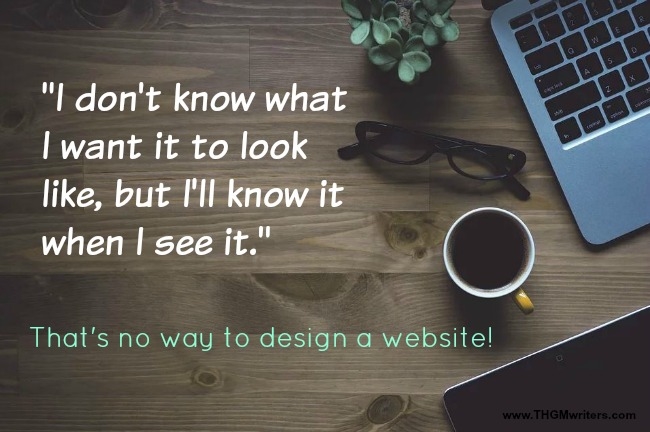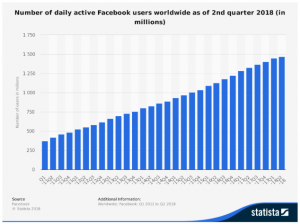As a small business owner, perhaps even a solo business owner, there are some website mistakes you should not have to worry about. You’ll hire a website designer, who shouldn’t make technical mistakes about SEO, security or user experience.
But there are mistakes that you still might make.
Some of those mistakes might be in the directions you give, or in the directions you fail to give. It might be, as in any client supplier relationship, in how you work with your website designer.
Because of my background in SEO and writing, I have set up many websites for small and solo businesses, such as plumbers, lawyers, authors and consultants..
And I have seen a lot of mistakes over the years. If you plan to set up your first website (finally!) or update that clunky old 1920’s website of yours, here are a few mistakes I have seen – and my recommendations to avoid making them yourself.
Starting off clueless
This is the top mistake most small businesses make. “I need a new website” is not a plan. It’s not even much of an idea.
Here’s the fix:
Take time to think about who your customers are and what they want to do when they get to your website. You already know what they want you to do for them when they hire you. But what do they want to do when on your website?
Pro tip: Check out your competition. While you don’t want to copy their mistakes, their websites might give valuable insights to get your inner strategist going.
Focusing on looks above function
Some small business owners have an idea of what they want their websites to look like. More modern. Blue. Cosmopolitan, perhaps.
That is one step better than clueless. But often the desired “look” has more to do with the business owner’s self-image than what will be most effective with clients.
Yes, design is important. People buy more from nice-looking websites.
But the best look is one that considers the consumer’s frame of mind when landing on your website. And function is more important than any specific look.
Here’s the fix:
Well, really the same fix as above. No need to repeat it.
Delivering too many messages
I’ve seen this a few times. You might have lots of things you want to say on your website. Don’t. Too many choices leaves people confused.
Here’s the fix:
Once you understand the frame of mind someone is in when they land on your website, and you know what action you want them to take, draw a straight line between the two. Lead them. For example, somebody comes to your plumbing site because there’s an unexpected mess in their house, so focus on “Emergency” and your phone number.
Following the big shiny object
“I don’t know what else my website should have, but I want a slideshow.” A slideshow or carousel looks really cool. And most of the time it also hinders usability. In plain English, it gets in the way.
Here’s the fix:
Put what’s important to the user near the top of the page. I have a slideshow at the bottom of my home page. At the bottom. Out of the way. It’s there as part of establishing credibility, which is vital when people are buying a service online. If you have a reason to use a slideshow, don’t put it at the top.
Being clueless on looks
I’ve said a lot of harsh things about focusing on looks over function. At the end of the day, the look is often a matter of taste. Many small business owners, especially solopreneurs, take the approach that, “I don’t know what I want it to look like, but I’ll know it when I see it.”
No, you won’t.
Your website designer won’t keep churning out designs until you see the elusive that’s-the-one.
Here’s the fix:
Spend some time looking at other websites. Look at colors. Look at styles. Look at how elements are placed. Look at website design features you might want included. Bring your website designer a clear picture of what you want your new site to look like.
Failing to focus on the conversion
What is the most important thing of any website? The call-to-action. Whatever it is you most want your visitors to do, that’s what counts. It might be to pick up the phone. It might be to fill in a form. It might be to sign up to a list. Whatever it is, your visitors should never find themselves trying to figure out how to do it.
If somebody has a leak, they need a plumber. Not after searching all over your website for a phone number. They need a plumber now. If somebody needs a lawyer, it’s often almost as urgent. Something has happened. They are in a panic. They need a lawyer.
Here’s the fix:
Make sure that, wherever your users are on your website, the call-to-action is easy-peasy to find, and it has to be obvious. Like a big red “Subscribe” button.
You’ll see a yellow form with a “Get my free quote” button on every page of my website, and the button floats as people scroll. It never leaves the screen.
Being photo-shy
I’ve had clients who don’t want their face to show on their websites. That’s fine for ecommerce, but when you offer services, such as legal or consulting or marketing or health advice, your face is the visual representation of your service. People care as much who is serving them as what that person doing for them.
This is no time to worry about privacy or shyness. If your reputation is your business, you have no choice but to grab the limelight.
Here’s the fix:
Your name and photo should be prominent on your home page. You should probably have more photos of yourself in action (such as with clients) elsewhere on your website.
If you work as a team, such as a half-dozen electricians or a four-person law office, a group photo would also be great. People really want to see whom they are dealing with.
Pro tip: Invest in a professional photographer and even getting a touch of make-up (yes, for men, too), because people buy more from better looking people and websites.
Forgetting about mobile
It’s kind of funny that some small business folks today still don’t think about mobile. Yes, they receive their leads at their desks, but that doesn’t mean the clients aren’t on the move when they visit the website.
Here’s the fix:
Make sure to ask for a responsive website – one that shows well on any size screen. And ask for all phone numbers to be clickable.
Forgetting about security
Security is not sexy. It’s easy to forget about. But it is critical to any operation, online or offline. There are so many things that can go wrong.
Your website designer might not know a whole lot about security. I sure don’t. But I work with someone who does, and he handles that aspect of any website I set up. Not all website designers work that way.
Here’s the fix:
Ask your website designer about security before you begin. And make sure that an SSL certificate is available when you choose your web hosting.
It’s your website
You can delegate the work of creating your website to a professional. That’s a good idea. But you should give direction and guidance. You should make sure that the focus of the website is to get the results that you want. It’s your business, so make sure your website does what it needs to do.
Digital & Social Articles on Business 2 Community
(73)









